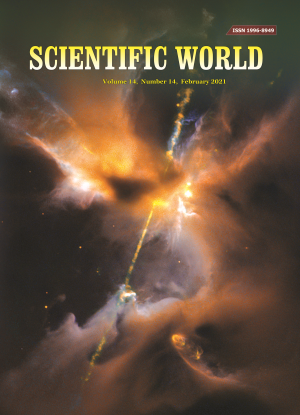Adsorptive Removal of Fe (II) By NaOH Treated Rice Husk: Adsorption Equilibrium And Kinetics
DOI:
https://doi.org/10.3126/sw.v14i14.34991Keywords:
Langmuir adsorption, Rice husk, IronAbstract
The low cost adsorbents were prepared from raw rice husk (RRH) and NaOH treated rice husk (NRH). Then prepared materials were characterized by XRD, FTIR and surface area of rice husk adsorbent were determined by methylene blue adsorption method. XRD showed amorphous nature with low crystallinity of the material. The FTIR spectra showed the presence of oxygenated functional groups such as ester, phenol, carbonyl and silica on the material. The surface area of RRH and NRH were found to be 387 and 417 m2/g respectively. Thus, prepared adsorbents were used for the removal of Fe(II) ion from aqueous solution. The influence of various parameters like pH, adsorbent doge, and contact time were studied for the better adsorption of Fe(II) on rice husk adsorbents. Results revealed that the maximum efficiency was achieved at pH 3 for Fe(II). The adsorption process was found to be best fitted to Langmuir adsorption isotherm model controlled by pseudo-second–order kinetics with the rate constant value i.e. 0.0218 and 0.0235 g/(mg·min) for RRH and NRH respectively. The χ2 values of pseudo second order was found to be lower which confirmed chemisorption, involving ion exchange and valence forces through sharing or exchange of electrons between adsorbent and adsorbate. The maximum adsorption capacity for Fe(II) on RRH and NRH was found to be 2.9 mg/g and 5.6 mg/g respectively. The positive ∆G value represents the randomness of the system during adsorption process. The slope of the linear plot of Qt vs t0.5 was linear but not passed through the origin, which indicates that, the intraparticle diffusion was not only rate controlling step. Temkin value showed the maximum binding energy (KT) for NRH was 16.4 L/g and for RRH it was 12.2 L/g.




